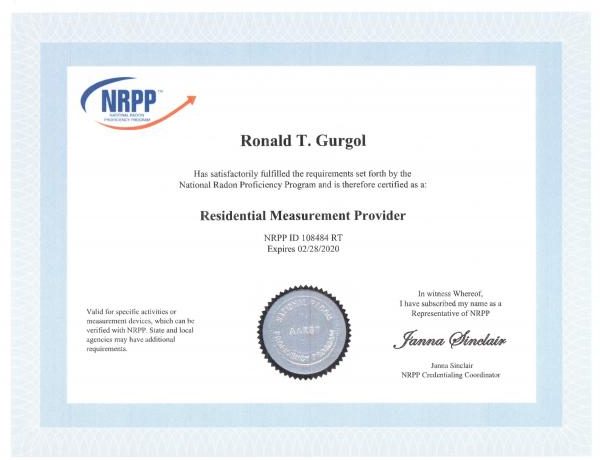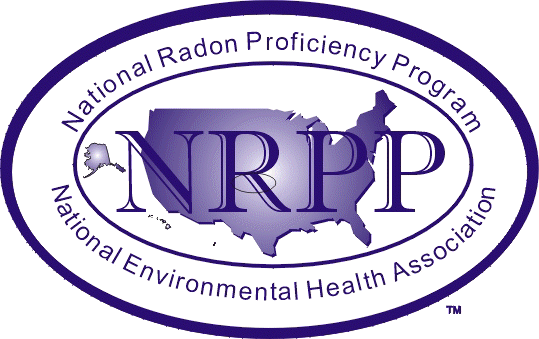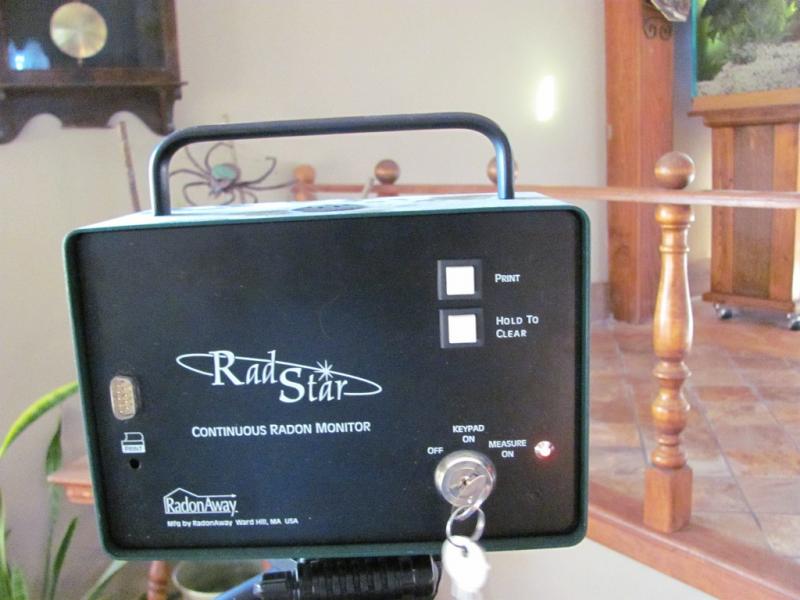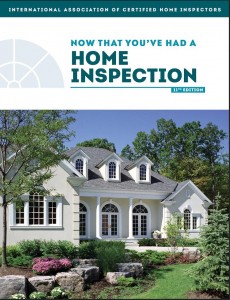CHECKED RIGHT HOME INSPECTIONS HAS NO CONFLICT OF INTEREST WHEN PERFORMING A RADON MEASUREMENT TEST.
PLEASE CALL 812-896-6210


NRPP CERTIFICATION #108484 RT (EXPIRES 2/28/2020)
INDIANA STATE DEPARTMENT OF HEALTH #RTP00595 EXPIRES 12/31/19
I AM A CERTIFIED RADON TECHNICIAN FOR THE STATE OF INDIANA. SERVICING ALL OF SOUTHERN INDIANA. I USE THE RS 300 CONTINUOUS RADON MONITOR WHICH GETS CALIBRATED YEARLY. LICENSE #RTP00595

This device measures radon and produces results in pCi/L. This detection category includes devices that record real-time, continuous measurements of radon gas over a series of minutes, and then report the results in hourly increments. The result using this type of detector is available at the completion of the test in the home or building without additional processing or analysis. These detectors are usually deployed for a minimum of 48 hours.
3/6/17 average Radon reading of 19.1 pCi/L in Sellersburg 47161
4/17/17 average Radon reading of 21.2 pCi/L in Jeffersonville 47130
5/3/17 average Radon reading of 15.6 pCi/L in Pekin 47165
5/5/17 average Radon reading of 73.6 pCi/L in Salem 47167
Radon Entry into a House
Common Radon Entry Points
There are four main factors that permit radon to seep into homes. All homes have some type of radon-entry pathway:
- Uranium is present in the soil nearly everywhere in the United States.
- The soil is permeable enough to allow radon to migrate into a home through the slab, basement or crawl space.
- There are pathways for radon to enter the basement, such as small holes, cracks, plumbing penetrations and sump pumps.
- A difference in air pressure between the basement or crawl space and the surrounding soil draws radon into the home.
Radon enters through:
- cracks in otherwise solid floors;
- gaps in suspended floors;
- cracks in walls;
- cavities inside walls;
- gaps around service pipes;
- construction joints; and
- the water supply.
Does foundation type affect radon entry?
Because radon can literally be sucked into a home, any home can potentially have a radon problem. All conventional house construction types have been found to have radon levels exceeding the action level of 4 pCi/L.
 Basement
Basement
Radon can enter through floor-to-wall joints, control joints and cracks in the slab.
 Crawl space
Crawl space
The vacuums that exist within a home are exerted in the crawl spaces, causing radon and other gases to enter the home from the earthen area below. Even with crawl space vents, a slight vacuum is still exerted in the crawl space. Measurements of homes with crawl spaces have shown elevated radon levels.
 Slab-on-Grade
Slab-on-Grade
Radon can enter a home regardless of whether it has a basement. Slabs built on grade can have just as many openings to allow radon to enter as do basements.
 Manufactured Homes
Manufactured Homes
Unless these buildings are set up on piers without any skirting placed around them, interior vacuums can cause radon to enter these types of homes, as well.
| RADON RISK for SMOKERS | |||
| Radon Level | If 1,000 people who smoke were exposed to this level over a lifetime... |
The risk of cancer from radon exposure compares to... |
WHAT TO DO: Stop smoking and... |
| 20 pCi/L | about 260 of them would get lung cancer. |
250 times the risk of drowning. | mitigate the exposure level. |
| 10 pCi/L | about 150 of them would get lung cancer. |
200 times the risk of dying in a home fire. |
mitigate the exposure level. |
| 8 pCi/L | about 120 of them would get lung cancer. |
30 times the risk of dying in a fall. |
mitigate the exposure level. |
| 4 pCi/L | about 62 of them would get lung cancer. |
5 times the risk of dying in a car crash. |
mitigate the exposure level. |
| 2 pCi/L | about 32 of them would get lung cancer. |
6 times the risk of dying from poison. |
consider mitigation if level is between 2 and 4 pCi/L. |
| 1.3 pCi/L | about 20 of them would get lung cancer. |
(average outdoor radon level) |
understand that reducing Rn levels below 2 pCi/L is difficult. |
| 0.4 pCi/L | ------------------ | (average outdoor radon level) |
understand that reducing Rn levels below 2 pCi/L is difficult. |
| RADON RISK for PEOPLE WHO HAVE NEVER SMOKED | |||
| Radon Level | If 1,000 people who have never smoked were exposed to this level over a lifetime... |
The risk of cancer from radon exposure compares to... |
WHAT TO DO: |
| 20 pCi/L | about 36 of them would get lung cancer. |
35 times the risk of drowning. |
Mitigate the exposure level. |
| 10 pCi/L | about 18 of them would get lung cancer. |
20 times the risk of dying in a fall. |
Mitigate the exposure level. |
| 8 pCi/L | about 15 of them would get lung cancer. |
4 times the risk of dying in a fall. |
Mitigate the exposure level. |
| 4 pCi/L | about 7 of them would get lung cancer. |
the same risk as dying in a car crash. |
Mitigate the exposure level. |
| 2 pCi/L | about 4 of them would get lung cancer. |
the same risk as dying from poison. |
Consider mitigation if level is between 2 and 4 pCi/L. |
| 1.3 pCi/L | about 2 of them would get lung cancer. |
(average indoor radon level) |
Understand that reducing Rn levels below 2 pCi/L is difficult. |
| 0.4 pCi/L | ----------------- | (average indoor radon level) |
Understand that reducing Rn levels below 2 pCi/L is difficult. |
There is no safe level of radon any exposure poses some risk of cancer. The National Academy of Sciences (NAS) studied and reported on the causes of lung cancer in two 1999 reports. They concluded that radon in indoor air is the second leading cause of lung cancer in the U.S. after cigarette smoking.
The NAS estimated that 15,000-22,000 Americans die every year from radon-related lung cancer. When people who smoke are exposed to radon as well, the risk of developing lung cancer is significantly higher than the risk of smoking alone. The chart at right compares lung cancer cases caused by radon to the incidence of other forms of cancer.
EPA set an action level of 4 pCi/L for indoor radon. The EPA recommends that if radon is found above 4 pCi/L, those levels should be mitigated. There is still some risk at a level below 4 pCi/L, and the EPA suggests that people may want to mitigate their homes to get them as close to the ambient outdoor level as possible. Outdoor air has an average of approximately 0.4 pCi/L.
Radon
This section is meant to provide a short overview only. Those wishing to know more should follow the EPA link at the bottom of the page.
What is Radon?
Radon is a colorless, odorless, radioactive gas which is a product of the natural decay of uranium located deep underground.
Lighter than air, it rises through cracks and fissures in the ground and can enter a home through cracks, joints and openings in a concrete slab, or move easily through floor, wall and ceiling framing assemblies. Homes with concrete slab floors, basements and crawl spaces are all vulnerable to radon entry.
Although some radon problems can come from water sources, most are from soil gas.
What Are the Health Risks?
Because it’s a radioactive gas, radon will eventually decay. When radon decays it emits tiny radioactive particles. If radon has been inhaled and is inside lungs, these particles can strike lung cells, causing abnormal lung cell replication, otherwise known as cancer.
The U.S. Environmental Protection Agency (EPA) calls radon the second leading cause of lung cancer in the U.S. No “safe” level of radon exists and the effects may be delayed for years, may affect children more than adults, or may never cause health problems. Generally, exposure to higher levels and longer exposure times increase the odds of developing radon-related health problems.
Where is Radon Found?
Some parts of the U.S. are more likely to have elevated levels of radon than others. The EPA National Radon Map provides great information on U.S. radon levels nationwide.
Radon Measurement
The only way to determine whether a home has levels which may pose a health risk it to have the home tested.
Testing for real estate transactions should comply with EPA protocols and be performed by a qualified neutral third party. Qualifications may vary by state.
Why is radon the public health risk that it is?
EPA estimates that about 20,000 lung cancer deaths each year in the U.S. are radon-related. Exposure to radon is the second leading cause of lung cancer after smoking. Radon is an odorless, tasteless and invisible gas produced by the decay of naturally occurring uranium in soil and water. Radon is a form of ionizing radiation and a proven carcinogen. Lung cancer is the only known effect on human health from exposure to radon in air. Thus far, there is no evidence that children are at greater risk of lung cancer than are adults.
Radon in air is ubiquitous. Radon is found in outdoor air and in the indoor air of buildings of all kinds. EPA recommends homes be fixed if the radon level is 4 pCi/L (pictures per liter) or more. Because there is no known safe level of exposure to radon, EPA also recommends that Americans consider fixing their home for radon levels between 2 pCi/L and 4 pCi/L. The average radon concentration in the indoor air of America's homes is about 1.3 pCi/L. It is upon this level that EPA based its estimate of 20,000 radon-related lung cancers a year upon. It is for this simple reason that EPA recommends that Americans consider fixing their homes when the radon level is between 2 pCi/L and 4 pCi/L. The average concentration of radon in outdoor air is .4 pCi/L or 1/10th of EPA's 4 pCi/L action level.
For smokers the risk of lung cancer is significant due to the synergistic effects of radon and smoking. For this population about 62 people in a 1,000 will die of lung-cancer, compared to 7.3 people in a 1,000 for never smokers. Put another way, a person who never smoked (never smoker) who is exposed to 1.3 pCi/L has a 2 in 1,000 chance of lung cancer; while a smoker has a 20 in 1,000 chance of dying from lung cancer. Figure A compares the risks between smokers and never smokers; smokers are at a much higher risk than never smokers, e.g., at 8 pCi/L the risk to smokers is six times the risk to never smokers.
The radon health risk is underscored by the fact that in 1988 Congress added Title III on Indoor Radon Abatement to the Toxic Substances Control Act. It codified and funded EPA's then fledgling radon program. Also that year, the Office of the U.S. Surgeon General issued a warning about radon urging Americans to test their homes and to reduce the radon level when necessary (U.S. Surgeon General).
Unfortunately, many Americans presume that because the action level is 4 pCi/L, a radon level of less than 4 pCi/L is "safe". This perception is altogether too common in the residential real estate market. In managing any risk, we should be concerned with the greatest risk. For most Americans, their greatest exposure to radon is in their homes; especially in rooms that are below grade (e.g., basements), rooms that are in contact with the ground and those rooms immediately above them.
It's never too late to reduce your risk of lung cancer.
Don't wait to test and fix a radon problem. If you are a smoker, stop smoking. Consider quitting. Until you can quit, smoke outside and provide your family with a smoke-free
home. (www.epa.gov/smokefree).
The EPA's Indoor Environments Division (IED) is responsible for conducting research and educating the public about indoor environmental issues, including health risks and the means by which human exposures can be reduced. IED educates the public about health risks associated with a variety of indoor environmental pollutants, including radon, secondhand smoke, indoor wood smoke, and other asthma triggers.
Another link you may be interested in http://www.epa.gov/radon/
 An inspection is just the start of keeping your home in good condition. With each inspection we offer a free book filled with home maintenance tips and other valuable information. Please
An inspection is just the start of keeping your home in good condition. With each inspection we offer a free book filled with home maintenance tips and other valuable information. Please